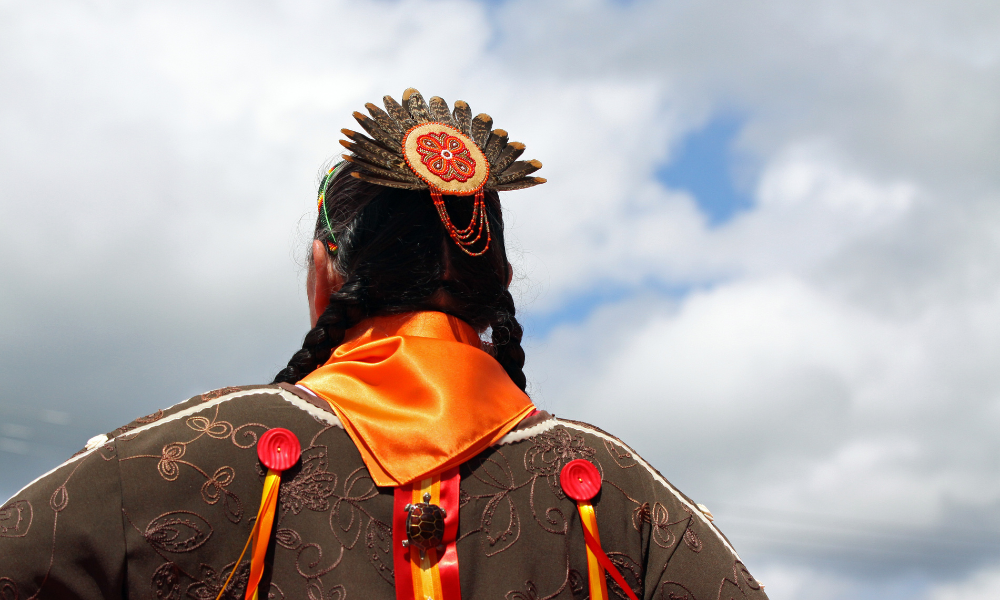In conversations about reconciliation and Indigenous rights, the terms Aboriginal law and Indigenous law often come up—but they don’t mean the same thing. Aboriginal law vs. Indigenous law represents a key legal and cultural distinction in Canada, as these are deeply rooted in the Indigenous Peoples’ struggles, past and present.
What are the differences between Aboriginal law vs. Indigenous law?
Understanding the differences, as well as the similarities, between Aboriginal law and Indigenous law can be done by:
- looking at Aboriginal Peoples and Indigenous Peoples
- differentiating how these two sets of laws apply to
Aboriginal Peoples vs. Indigenous Peoples
The terms “Aboriginal Peoples” and “Indigenous Peoples” are technically two different terms which are mostly used interchangeably. However, the commonly accepted perspective is that these two terms are not exclusive and are one of the same things.
Indigenous Peoples is the collective term used to refer to the original people of North America and their descendants. The term “Aboriginal peoples” may also be used to refer to the same group of people.
According to the Canadian Constitution, the term Indigenous or “Aboriginal peoples of Canada” refer to three distinct groups, namely:
- the Indians (or also referred to as First Nations)
- the Inuit
- the Métis
The use of these two terms to mean the same group of people is also in keeping with Canada’s treaty and international obligations. In any case, using the correct term is crucial, especially when using the term that the Indigenous or Aboriginal group uses for themselves.
Aboriginal Law vs. Indigenous Law
In distinguishing Aboriginal law vs. Indigenous law, it is worthy to note that these are two different terms, especially in the perspective of the Canadian legal system. This is even if Aboriginal peoples and Indigenous peoples may mean the same.
Generally, Aboriginal law and Indigenous law may be differentiated through the following factors:
- definition
- enactment
- applicability
We’ll discuss these factors below. For a primer about Indigenous law in Canada, watch this video:
Discover the other similarities and differences between Aboriginal law and Indigenous law by reaching out to the best Aboriginal law lawyers in Canada as ranked by Lexpert.
(1) Definition
Although these two terms have a lot of definitions given by numerous authors, the most common and widely accepted ones are the following:
-
Indigenous law: refers to the legal systems developed by the Indigenous Peoples for themselves, governing their communities, their relationships with another, and even the management of their lands or other natural resources
-
Aboriginal law: the body of law made by the courts (common law) and by the legislature (laws and regulations) which govern the relationship of the Indigenous Peoples (or Aboriginal peoples) and the Crown (the state or the government)
With this definition, it can already be gleaned how these two sets of laws are created, and to whom they apply for.
(2) Enactment
Aboriginal laws are enacted through the usual legislative process in drafting and passing laws. It may also be pronounced by the courts through its judicial decisions, which becomes part of common law.
Aboriginal laws are found in various laws governing Indigenous Peoples, such as the:
- Royal Proclamation of 1763
- Indian Act
- Canadian Constitution
On the other hand, Indigenous law is “enacted” or is instituted by the very traditional and cultural use of a practice or “law” over the generations by the Indigenous Peoples. It then becomes a customary law among those who use these laws over generations.
The “formal” recognition of Indigenous law is anchored on the traditions and cultures themselves and is wholly dependent on the actual practice of the Indigenous Peoples. It can also be said that certain Indigenous laws predate Aboriginal laws, since some Indigenous laws have been present even during the pre-colonial era.
This process of enacting and legislating their own laws is a manifestation of the Indigenous Peoples’ right to self-determination. It also breaks away from the current justice system, which is admittedly prejudiced, or at times is racist, against the Indigenous Peoples.
(3) Enforceability
Indigenous law is enforceable or applies only among the Indigenous Peoples. However, it may affect those who are not members of the Indigenous groups, and even the government when it is translated into either:
- a treaty
- a court decision (common law)
- a provision of a law
It then becomes part of Aboriginal law and is enforceable against those whom the law explicitly states are covered.
However, the issue on enforceability of Indigenous laws, such as First Nations laws and by-laws, is a complex one. It’s recognized that Indigenous Peoples have the right to self-determination and self-governance, which comes along with it the enactment of their own laws.
But how these laws are enforced, alongside the Canadian justice system, continues to be a discussion. At best, it has been a point of continuing resolution for both the Indigenous Peoples and the government.
Summary: Aboriginal law vs. Indigenous law
Here’s a summary of the key differences and similarities between Aboriginal law and Indigenous law in Canada:
|
|
Aboriginal law |
Indigenous law |
|---|---|---|
|
Definition |
Canadian-made laws (legislation or court decisions) that define the relationship between Indigenous Peoples and the Crown (the government) |
Legal systems created by Indigenous communities themselves, based on their own customs, traditions, and governance practices |
|
Source of Law |
Enacted by Canadian government or by the courts |
Rooted in Indigenous traditions and oral histories, often predating colonization |
|
Scope & Application |
Applies broadly through Canadian legal institutions; may affect all Canadians |
Primarily applies within Indigenous communities; may impact others only when recognized through treaties or court rulings |
|
Enforcement |
Enforced by Canadian courts and state institutions |
Enforced internally within Indigenous communities |
What is Indigenous law in Canada?
To further understand Aboriginal law vs. Indigenous law in Canada, we can also look at these two terms separately, and how it relates with the country's legal system.
Canada has a long history with the Indigenous Peoples and the ongoing recognition of their distinct rights granted to them by the Constitution and the law. It also comes with the acknowledgement of the Indigenous Peoples’ own legal system based on their tradition and culture. This legal system is collectively called Indigenous law.
Canadian Indigenous law
Indigenous law refers to the distinct legal system by the Indigenous Peoples in Canada. This legal system is made up of customary laws and cultural practices that have been developed over time in these Indigenous communities. It is a law from which rights and legal systems arise to govern the Indigenous Peoples and their communities.
Because of the unique nature of Indigenous law, it may come in the form of unwritten and written laws:
-
unwritten: when it is passed down from generation to generation through oral tradition and by practice itself
-
written: when these laws and principles have been codified and are put into common law or through statutes
Customary Indigenous laws
Generally, these customary laws govern the relationship between the Indigenous Peoples with each other, and their relationship with nature and the environment.
Customary Indigenous laws may either govern the relationship between individuals, or between an individual and the community they belong to, such as:
- Indigenous laws on family relationships, community and spiritual beliefs, and “codes” of conduct
- system of alternative dispute resolution (ADR) developed over generations of keeping the peace in their communities
Another known aspect of Indigenous law is the people’s stewardship of ancestral lands. This includes lands that the Indigenous Peoples have acquired native titles for, and of course, the other resources found in them.
Difference between Indigenous law and Canadian law
Canadian law, as generally understood, is made up of federal legislations, common law, and provincial and territorial statutes. On the other hand, Indigenous law is self-made. It governs the Indigenous Peoples and is based on their cultural history and customary laws.
While both Indigenous law and Canadian law can be enforced on Indigenous Peoples, not all Indigenous law is said to be enforceable against every Canadian. At best, the laws surrounding a particular community or group only govern them, unless it has been codified into a legislative statute.
Does Canada recognize Indigenous law?
Both Canadian common law and the Constitution itself, in Section 35 (1), have recognized Indigenous law as a separate and distinct law for the self-government of the Indigenous Peoples. This includes the recognition of their native titles over the ancestral lands and territories and the natural resources found in these lands. This recognition is important to prevent frictions between common law and Indigenous law, and in the continuing effort to harmonize them.
As a rule, Indigenous Peoples are subject to the jurisdiction of Canadian laws, from its provincial and municipal laws up to the federal laws, including Canadian common law. The exception to this is unless there’s separate and distinct right or treatment granted to them either by a:
- treaty
- court declaration
- statutory provision of a law
This is to acknowledge that while Indigenous law is a law itself existing in Canada’s jurisdiction, it would still be subject to Canadian statutes and common law.
The Tsilhqot’in Nation case
An example of this separate and distinct right or treatment provided by Canadian law is the affirmation of the Aboriginal title. Among others, this was declared by the Supreme Court decision in the case of Tsilhqot’in Nation v. British Columbia, 2014 SCC 44.
The Court further states that:
-
such Aboriginal title carries with it the right to use and manage these lands granted under the said title
-
in evaluating a claim for an Aboriginal title, both common law and Indigenous law are to be considered
This video explains more about the relationship between treaties and Indigenous law, in the context of the Canadian justice system:
Consult with the Lexpert-ranked best law firms practicing Aboriginal law in Canada for more details on these treaties that affect our local communities.
What is Aboriginal law in Canada?
As mentioned above, Aboriginal law is the series of laws created by the Canadian government that govern the Indigenous peoples. This is then contrasted with Indigenous law, which is the law that the indigenous have written for themselves.
Central to Aboriginal law in Canada is Section 35 of the Constitution. It’s the constitutional provision which recognizes and affirms the Aboriginal and treaty rights of the Aboriginal peoples of Canada. It also guarantees these rights equally to male and female Aboriginal persons.
Aboriginal law vs. Indigenous law: legal recognition of Indigenous Peoples’ rights
In achieving meaningful reconciliation and in ensuring that Indigenous Peoples are accorded their rights, the distinctions between Aboriginal law and Indigenous law become relevant. At the end of the day, we need both to meet the desired harmony for the Indigenous Peoples and the government. In any case, Aboriginal law lawyers are always there to put forward the interests and defend the rights of Indigenous and Aboriginal Peoples.
More resources are found in our Legal FAQs page, if you want to read other articles on Aboriginal law vs. Indigenous law from the legal perspective.




